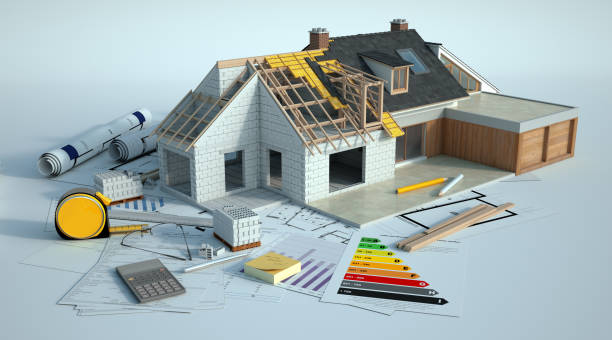Your roof is one of the biggest investments in your home, and in Texas, where the weather can swing from blazing heat to violent hailstorms, the roofing material you choose matters. The right choice will not only protect your home but also save you money in the long run.
At Falcon Roofing & Restoration, we help homeowners across Austin and Central Texas make smart roofing decisions. Here’s a breakdown of the five most popular roofing materials in Texas and what you can expect to pay for each.
1. Asphalt Shingles – The Reliable Standard
Asphalt shingles are the most widely used roofing material in Texas. They’re affordable, versatile, and easy to replace after storms.
-
3-Tab Shingles: $3.50–$5.00 per sq ft installed
-
Architectural Shingles: $5.00–$7.50 per sq ft installed
Why Texans Choose Asphalt: They’re budget-friendly, available in many styles, and can last 20–30 years. Some impact-resistant shingles may even help reduce insurance costs.
2. Metal Roofing – Built for Texas Weather
Metal roofing has become increasingly popular for homeowners wanting durability and energy efficiency.
-
Corrugated Sheet Metal: $5–$12 per sq ft installed
-
Standing Seam Panels: $9–$16 per sq ft installed
Why Texans Choose Metal: It reflects heat, holds up against hail, and can last 40–70 years. While more expensive upfront, it often saves money in the long term.
Learn more about our roof replacement services.
3. Clay and Concrete Tile – Stylish and Strong
Tile roofing is common in Spanish and Mediterranean-style homes throughout Texas.
-
Clay Tile: $15–$25 per sq ft installed
-
Concrete Tile: $12–$20 per sq ft installed
Why Texans Choose Tile: It’s fire-resistant, adds curb appeal, and can last more than 50 years. These roofs are heavier, so some homes may need structural reinforcement.
4. Wood Shakes and Shingles – Natural Appeal
While not as common as asphalt or metal, wood roofs remain a unique option for Texas homeowners.
-
Cost: $6–$15 per sq ft installed
Why Texans Choose Wood: They provide a rustic look and natural insulation. Fire safety and maintenance are concerns, so treated wood products are usually recommended.
5. Flat and Low-Slope Roofs – TPO, PVC, EPDM
For flat or modern-style homes, single-ply membranes like TPO, PVC, or EPDM are a cost-effective solution.
-
Cost: $6–$10 per sq ft installed
Why Texans Choose Flat Roof Systems: They’re energy-efficient, ideal for modern homes, and durable when installed by professionals.
What Affects Roofing Costs in Texas?
No matter the material, these factors will influence your final price:
-
Roof size and shape
-
Steepness and accessibility
-
Tear-off vs. overlay installation
-
Type of underlayment and flashing upgrades
-
Insurance coverage for storm-related damage
If your roof damage is storm-related, our team provides insurance claim assistance to help minimize out-of-pocket costs.
Choosing the Right Roof for Your Texas Home
-
Budget-conscious homeowners usually choose asphalt shingles.
-
Durability seekers prefer metal roofing.
-
Style-focused homeowners love tile.
-
Rustic design fans lean toward wood shakes.
-
Flat-roof homes go with TPO, PVC, or EPDM.
Get a Free Estimate Today
At Falcon Roofing & Restoration, we make it simple to compare your options. Use our instant online estimator to get a roof replacement price in seconds—or call us at (512) 200-1539 for a personalized consultation.
📍 Serving Austin, Round Rock, Georgetown, Cedar Park, Pflugerville, and surrounding Central Texas communities.
Final Thoughts
The right roofing material is about more than just cost—it’s about protecting your home for years to come. Whether you’re looking at asphalt shingles, metal, tile, or a specialized option, Falcon Roofing & Restoration is here to guide you every step of the way.
FAQ
What is the most affordable roofing material in Texas?
Asphalt shingles are usually the lowest-cost option. Three-tab shingles tend to be the cheapest, while architectural shingles cost a bit more but offer longer life and better wind ratings.
How long does a metal roof last in Austin?
With professional installation and proper ventilation, metal roofing commonly lasts 40–70 years. Standing-seam systems typically outlast exposed-fastener panels.
What’s the average cost of a new roof in Texas?
It depends on size, pitch, and material. As a general range: asphalt shingles run about $3.50–$7.50 per sq ft installed; metal $5–$16; tile $12–$25; wood $6–$15; and TPO/PVC/EPDM (low-slope) $6–$10.
Should I repair or replace my roof?
If damage is localized (a few missing shingles, a small flashing leak), repair is often best. If you see widespread granule loss, repeated leaks, sagging decking, or your roof is 15–20+ years old, replacement may be more cost-effective.
Does homeowners insurance cover roof damage from storms?
Typically yes, for sudden events like hail or wind. Coverage depends on your policy and roof age. We document damage, meet your adjuster, and help with the claim process so you only pay your deductible if approved.
What are the benefits of impact-resistant shingles in Texas?
Class 4 impact-rated shingles help resist hail damage and can sometimes qualify for insurance discounts. They also improve wind performance in severe weather.
How fast can Falcon Roofing & Restoration inspect my roof after a storm?
We offer rapid response in Austin and neighboring cities. Request an inspection and we’ll prioritize emergency tarping and fast documentation to prevent further damage.
Can I get a roof estimate without a site visit?
Yes—use our satellite-powered instant roof estimator to get pricing in seconds. We’ll confirm measurements and details during a follow-up visit.
What factors increase roofing cost the most?
Tear-off and disposal of old layers, steep/complex roofs, premium underlayment, upgraded flashing, and material choice (metal/tile vs. asphalt) have the biggest impact.
Which roofing material is best for Texas heat?
Metal and light-colored/reflective shingles help lower attic temperatures. Proper ventilation and radiant barriers also improve energy performance.



